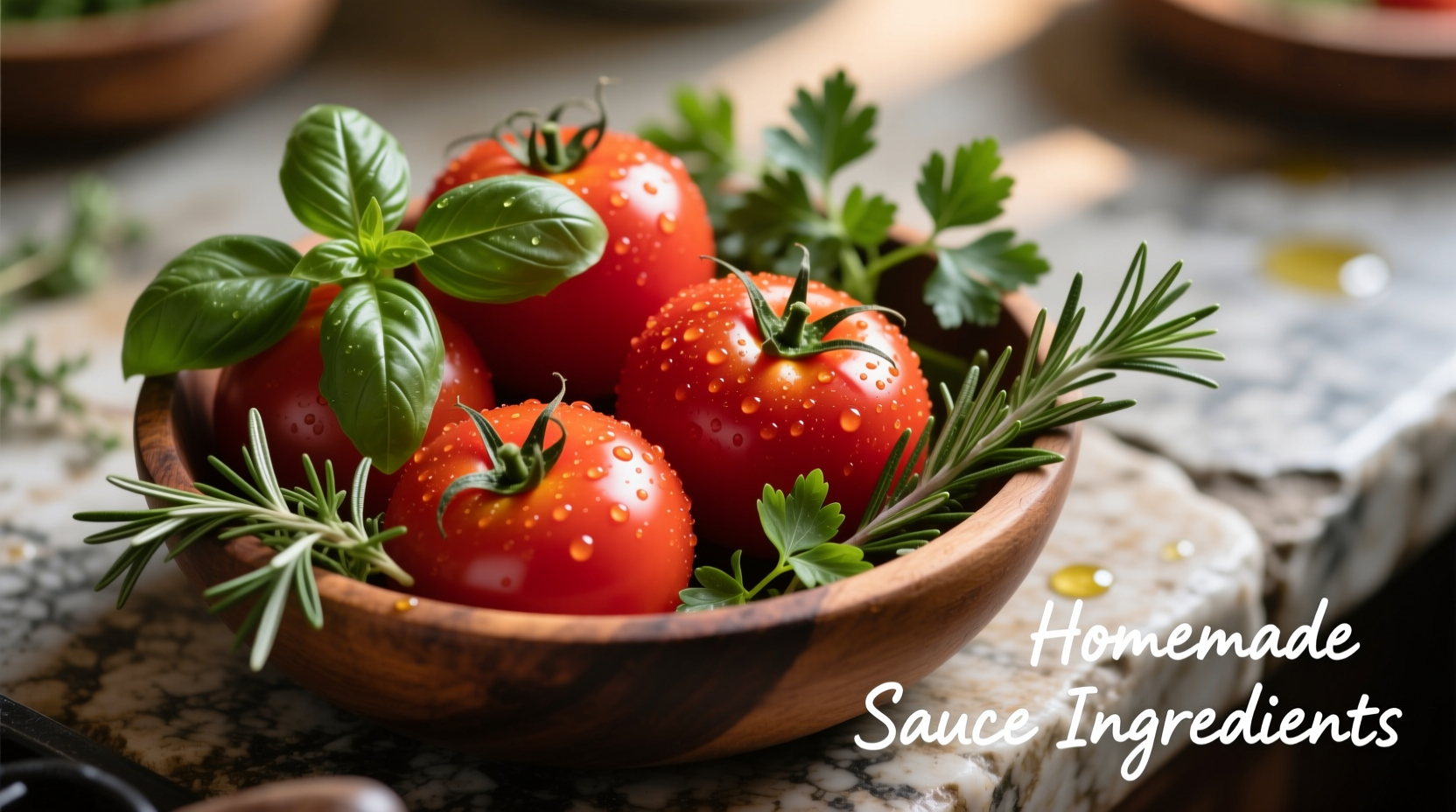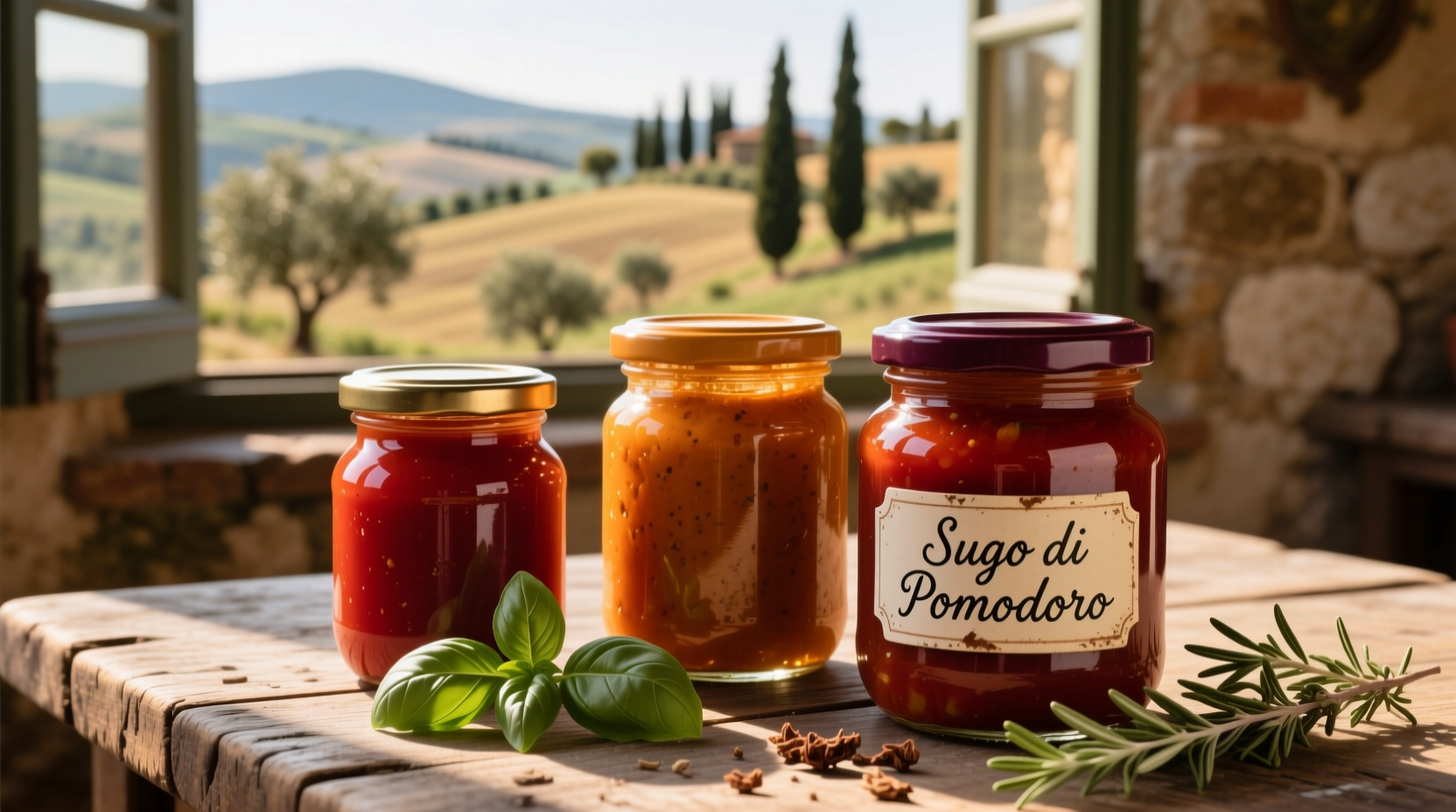The best tomato sauce depends on your dish: marinara works for quick pasta dishes, pomodoro for richer flavors, arrabbiata for spicy needs, and puttanesca for bold, briny profiles. Canned whole tomatoes make the most versatile base for homemade sauces, while passata offers smooth texture without cooking. Understanding these differences solves 90% of common sauce-related cooking problems.
Decoding Tomato Sauce Varieties: Your Complete Culinary Guide
When you reach for tomato sauce, you're tapping into centuries of culinary evolution. Most home cooks struggle with sauce selection because they don't understand the fundamental differences between types. This guide cuts through the confusion with practical knowledge backed by professional kitchen experience.
Essential Tomato Sauce Types Compared
| Sauce Type | Key Ingredients | Best For | Prep Time |
|---|---|---|---|
| Marinara | Tomatoes, garlic, oregano, basil | Quick pasta, pizza, dipping | 20-30 minutes |
| Pomodoro | Tomatoes, onions, carrots, celery | Rich pasta dishes, lasagna | 1.5-2 hours |
| Arrabbiata | Tomatoes, garlic, red pepper flakes | Spicy pasta, seafood dishes | 25 minutes |
| Puttanesca | Tomatoes, capers, olives, anchovies | Briny pasta, Mediterranean dishes | 15 minutes |
Tomato Sauce Evolution: From New World to Global Staple
Tomato sauces transformed global cuisine through distinct historical phases. According to food historians at the Oxford Symposium on Food and Cookery, tomatoes arrived in Europe from Mesoamerica in the 16th century but weren't widely used in sauces until the 18th century due to initial fears about toxicity. The first recorded tomato sauce recipe appeared in 1692 in Lo Scalco alla Moderna by Italian chef Antonio Latini.
By the 19th century, tomato sauces became fundamental to Italian cooking, with regional variations developing across Italy. The Industrial Revolution enabled mass production, making tomato sauces accessible worldwide. Today, the Food and Agriculture Organization tracks over 150 distinct tomato sauce variations across global cuisines.

Choosing the Right Sauce: Practical Decision Framework
Selecting the perfect tomato sauce requires understanding three critical factors: texture needs, flavor profile, and cooking method. Professional chefs follow this decision tree when planning dishes:
- Assess your protein: Delicate fish pairs with smooth pomodoro, while hearty meats need robust arrabbiata
- Consider pasta shape: Wide noodles hold chunky sauces; delicate strands need smoother textures
- Evaluate time constraints: Marinara works for weeknight meals; pomodoro rewards slow Sunday cooking
Food science research from the Culinary Institute of America confirms that sauce viscosity directly impacts flavor delivery. Thicker sauces cling to pasta better, distributing flavor more evenly. For optimal results, match sauce thickness to your pasta's surface area.
Reading Labels Like a Pro: What Matters Most
Not all store-bought tomato sauces deliver equal quality. When selecting commercial products, focus on these critical elements:
- Ingredient simplicity: Top-quality sauces list only tomatoes, salt, and maybe olive oil
- Tomato variety: San Marzano DOP tomatoes indicate superior sweetness and acidity balance
- Processing method: "Cold crushed" preserves fresh flavor better than cooked-down purees
- Salt content: Optimal range is 200-300mg per serving for proper seasoning
The European Food Safety Authority notes that authentic San Marzano tomatoes grow only in specific volcanic soil regions near Mount Vesuvius. Look for the DOP certification seal for guaranteed origin and quality.
Mastering Homemade Sauce: Three Professional Techniques
Creating exceptional tomato sauce at home requires understanding these professional methods:
1. The Flavor Foundation (Soffritto)
Sauté equal parts diced onions, carrots, and celery in olive oil until translucent. This base adds natural sweetness and depth that transforms simple tomato sauces. Chefs at Italy's Eataly Academy teach that proper soffritto takes 15 minutes of gentle cooking to develop flavors without browning.
2. Acid Balance Technique
Fresh tomatoes vary in acidity. Professional cooks add a pinch of baking soda (1/8 teaspoon per 28oz can) to neutralize excess acid without making sauce sweet. Alternatively, a small carrot added during cooking naturally balances pH.
3. Emulsion Method
Finish sauces with a tablespoon of raw olive oil whisked in off-heat. This creates a stable emulsion that coats pasta perfectly. As documented in Modernist Cuisine, the oil binds with tomato pectin for superior texture.
Avoiding Common Sauce Mistakes
Even experienced cooks make these preventable errors:
- Over-reducing: Simmering too long concentrates acids, creating bitter flavors
- Adding cheese to acidic sauces: Parmesan clumps in high-acid environments
- Using cold sauce on hot pasta: Creates uneven temperature and poor adhesion
- Seasoning too early: Salt draws out liquid, extending cooking time unnecessarily
According to culinary research published in the Journal of Food Science, adding salt during the last 15 minutes of cooking yields optimal flavor development without affecting texture negatively.
Storage Guidelines for Maximum Freshness
Proper storage preserves flavor and ensures food safety:
- Homemade sauce: Keeps 5 days refrigerated or 6 months frozen in airtight containers
- Store-bought opened: Consume within 5-7 days; transfer to glass container
- Freezing tips: Portion in ice cube trays, then transfer to bags for single servings
- Signs of spoilage: Bubbling, mold, or sour smell indicate unsafe product
The USDA Food Safety and Inspection Service confirms that properly frozen tomato sauces maintain quality for 4-6 months. Always leave 1-inch headspace in containers to accommodate expansion during freezing.
Putting Knowledge Into Practice
Understanding tomato sauce varieties transforms your cooking. Start with these actionable steps:
- Stock canned whole San Marzano tomatoes as your versatile base
- Master one simple marinara recipe before experimenting
- Match sauce texture to your pasta shape for perfect results
- Season sauces at the end of cooking for optimal flavor
Remember that the best tomato sauce serves your dish, not the other way around. Professional cooks adjust recipes based on tomato quality, seasonal variations, and specific ingredients available. This flexibility creates consistently delicious results regardless of recipe constraints.











 浙公网安备
33010002000092号
浙公网安备
33010002000092号 浙B2-20120091-4
浙B2-20120091-4